|
 Secure Site
Secure Site
|
 |
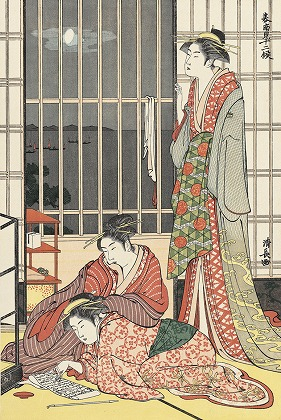 Use Your Soothing Chime Alarm Clock - Kiyonaga Torii, Beauties in September Whenever my husband tells one of his legendary bedtime stories, it’s as if our entire world slows to a crawl. It doesn’t matter if the plot hangs on the genius of Detective Victor Garcia and his whip-smart daughter Inez — or the pranks of Captain Giggles, who’s inclined to put Jell-O in people’s rain boots when they least expect it. The minute Chris settles into his chair, gathering that first sentence in his imagination, our three girls hold their collective breath. The house falls silent.
What makes these moments so enchanting isn’t just his storytelling mastery. It’s also the timelessness it evokes. Lost in the spell of the latest adventure, his enraptured audience wants nothing more than for the tale to unravel slowly. If they had their wish, it would go on for hours.
My kids, like all kids, have that famously easy way of getting lost in a moment. The truth about these stories, though, is that our everyday life too often crowds them out — the mountains of laundry, the getting to work on time, the broken dryer, the doctor’s appointments. Despite wanting to wallow in stretches of downtime, I often feel as if chaos lurks just around the corner — and I know I’m not alone. Coworkers, neighbors, friends, the woman at the checkout counter, the post-office guy, my yoga teacher — they all knowingly roll their eyes these days at the mere mention of “busy.” It seems we’re all aching for more breathing room. Somehow, though, despite our best intentions, we can’t seem to find it.
The idea of a national time crunch isn’t new, of course. The public hand-wringing actually began decades ago, as researchers revealed the serious health consequences of the then-novel “24/7 lifestyle.” But since then, the problem has reached epidemic proportions. “Every woman I talk to these days tells me she’s exhausted,” says Kathleen Hall, founder of The Stress Institute in Clarkesville, Georgia, and author of “A Life in Balance and Alter Your Life.” But it’s not only our health that suffers — it’s our happiness, too. Living on overdrive squeezes out the breathing room we need to appreciate any given moment. As we rush through life, it passes us by.
The effect can feel a bit like being swept into white-water rapids. “But we’re not as helpless as we think,” says Cecile Andrews, author of “Slow Is Beautiful: New Visions of Community, Leisure, and Joie de Vivre” and an active member of Take Back Your Time, a group heading a national effort to address America’s time famine. As she and other experts explain it, finding more time isn’t about getting skilled at cramming everything in. Instead, it involves looking at the problem — and also ourselves — with a fresh perspective. By identifying what truly makes us happy and recognizing how our choices affect our lives, we can keep the big picture of our life path in full view. Then, says Andrews, “we can all take a breath and begin to slow down.”
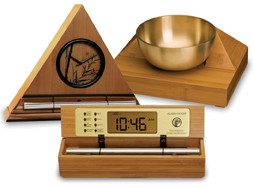 Chime Alarm Clocks and Timers for Meditation & Yoga One of the ultimate Zen like experiences is waking-up from a great slumber refreshed and energized. Your mind and body are harmoniously one, both alert and focused. Having a refreshed mind and body are two keys to a natural and Zen lifestyle. Waking up in the morning should not be a loud and abrupt awakening, but rather it should be a peaceful positive experience. The right natural alarm clock can transition your deep and tranquil sleep into a serene start to consciousness. Imagine a long-resonating Tibetan bell-like chime waking you up to a beautiful morning experience.
The right alarm clock can be the most beneficial investment for you. With our Now & Zen natural alarm clock you are awakened more gradually and thus more naturally. Now & Zen is focused on creating a naturalistic lifestyle, and our clocks are an example of our philosophy.
adapted from Body + Soul, October 2006 by Jennifer Barrett
 Gradual, Soothing Chime Alarm Clocks - Boulder, Colorado Now & Zen’s Gradual and Soothing Chime Alarm Clock Store
1638 Pearl Street
Boulder, CO 80302
(800) 779-6383
Posted in intention
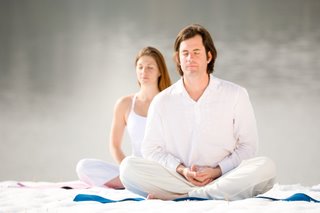 How to feel more compassionate Maitryadisu balani
The cultivation of friendliness creates inner strength. (Yoga Sutra III.24)
We typically think of our emotional range as something that is fixed and unchanging—a reflection of the personality we’re born with. But research is revealing the possibility that we may be able to cultivate and increase our ability to feel the emotional state of compassion. Researchers have found that feeling connected to others is as learnable as any other skill. “We are trying to provide evidence that meditation can cultivate compassion, and that you can see the change in both the person’s behavior and the function of the brain,” Lutz says.
So what does compassion look like in the brain? To find out, Lutz and his colleagues compared two groups of -meditators—one group whose members were experienced in compassion meditation, and the other a group whose members were not—and gave them the same instructions: to generate a state of love and compassion by thinking about someone they care about, extend those feelings to others, and finally, to feel love and compassion without any specific object. As each of the participants meditated in-side the fMRI brain scanners, they were occasionally interrupted by spontaneous and unexpected human sounds—such as a baby cooing or a woman screaming—that might elicit feelings of care or concern.
All of the meditators showed emotional responses to the sounds. But the more experienced compassion meditators showed a larger brain response in areas important for processing physical sensations and for emotional responding, particularly to sounds of distress. The researchers also observed an increase in heart rate that corresponded to the brain changes. These findings suggest that the meditators were having a genuine empathic response and that the experienced meditators felt greater compassion. In other words, compassion meditation appears to make the brain more naturally open to a connection with others.
These meditation techniques may have benefits beyond the experience of spontaneous compassion. A study by psychology professor Barbara Fredrickson and her colleagues at the University of North Carolina, Chapel Hill, and the University of Michigan, found that a seven-week lovingkindness meditation course also increased the participants’ daily experience of joy, gratitude, and hope. The more participants meditated, the better they felt. Participants also reported a greater sense of self-acceptance, social support, purpose in life, and life satisfaction, while experiencing fewer symptoms of illness and depression. This study provides strong evidence that chipping away at the illusion of separation can open us up to a far more meaningful connection to life.
adapted from Yoga Journal, by Kelly McGonigal
Use our unique “Zen Clock” which functions as a Yoga & Meditation Timer. It features a long-resonating acoustic chime that brings your meditation or yoga session to a gradual close, preserving the environment of stillness while also acting as an effective time signal. Our Yoga Timer & Clock can be programmed to chime at the end of the meditation or yoga session or periodically throughout the session as a kind of sonic yantra. The beauty and functionality of the Zen Clock/Timer makes it a meditation tool that can actually help you “make time” for meditation in your life. Bring yourself back to balance.
 Zen Timers and Gentle Alarm Clocks Now & Zen – The Chime Timer Store
1638 Pearl Street
Boulder, CO 80302
(800) 779-6383
Posted in Chime Alarm Clocks, intention, Meditation Timers, Meditation Tools, mindfulness practice, Now & Zen Alarm Clocks, Well-being, zen, Zen Timers
 set your zen timer for a mini-meditation Memorize a three-to-five-word phrase, a mantra, that will bring you back to center when things get rough, such as “I am strong” or “Spirit will guide me.” Also, keep a peaceful image mentally on hand (a beach scene, a quiet forest) to call up in stressful moments. Set your Digital Meditation Timer with Chime for 5 minutes and sit silently repeating your phrase until the calming chime sounds.
adapted from Body + Soul Magazine
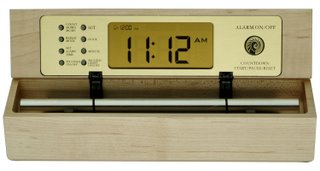 digital timers for meditation and yoga with chime Now & Zen – The Meditation Timer Store
1638 Pearl Street
Boulder, CO 80302
(800) 779-6383
Posted in Chime Alarm Clocks, intention, Meditation Timers, Meditation Tools, mindfulness practice, Well-being, Zen Timers
 time for a rest Cold, dark, stormy winter is the season that makes us glad to live in buildings. This is the time when we want a lot less contact with the world outside our walls—and when the impact of whatever is inside our homes is intensified.
Winter is the season for slowing down, going within, resting, and reflecting; we tend to sleep longer, eat more, be less active, and feel more emotionally sensitive. As we move inward, we aren’t turning our back on the rest of life; we’re doing essentially the same things that the other animals and plants in our hemisphere are doing. When we don’t join them, we deprive ourselves of an important restorative experience.
Satisfy your soul
Winter is a good time to tune in to yourself. There’s no need to keep up the high energy levels of summer. It’s time to curl up on the couch under a lap robe with a mug of herbal tea and reflect on your life. It’s an especially good time to look around and notice whether your home nurtures you, renews you, and provides a safe place where you can hear the still, small voice within.
 Winter is a good time to tune in to yourself What do you long to come home to? If you work at a high-pressure job, you may need your home to be soft and peaceful. If your day is spent tending to the needs of others, you may want a corner where you can shut out the world. If much of your day is spent in solo pursuits, you may want your home to be a place for gathering with friends or family. If you have small children, it may seem especially difficult to carve out space and time for yourself—but no one needs it more than parents, and small gestures of self-love can go a long way.
When arranging their interior spaces, people often focus on the more public areas (entry, living room, dining room) and neglect their more private rooms (bedroom, study, bathroom). If your home is to be your place of renewal, your oasis in a crazy world, give to yourself! Think about what elements make you feel most at home: art objects, relaxing colors, sensuous fabrics, warm lighting, good music? Do you have at least one area where you can make the world go away and wrap yourself in love? What really helps you let go of tension? An overstuffed chair by a window where you can read a book and watch the storms rage outside? A steaming aromatherapy bath by candlelight? A homey dining table with warm, intimate lighting where you can share the day’s stories with your family? A sacred place for meditation? Filling the house with the smell of baking bread?
And how is your bedroom? Does it help you drift off to sleep relaxed and content, or is it decked out with piles of laundry, exercise equipment, and unpaid bills? The time you spend clearing up clutter and making your bedroom peaceful will pay you back in serenity and rejuvenating rest. How you wake up is important, too. What are the first things you see when you open your eyes in the morning? Do they help you feel good inside?
Transcend the fear of selfishness
The point of all this self-nurturing is not to isolate you in a bubble of indulgence. Quite the opposite; the point is to restore and maintain your vitality. Because all of life is interconnected, this is the basis of caring for all life. Furthermore, the better we understand our own organism’s needs, the more deeply we grasp the nature of life itself. The more depleted we are, the harder it is to care for other things—and a lot of us are pretty depleted. If we care about the earth and the life on it, we must include ourselves. It makes no sense to “save the planet” while abusing our own vitality with excessive busyness, sleep deprivation, and overwork. Somehow we bought the idea that it’s selfish to take care of ourselves, and that crazy notion has estranged us from the very pulse of life. Exuberant love of life is the most powerful place to come from, and that state arises naturally when we take good care of the life we have—not in ignorance of the rest of life, but in harmony with it.
adapted from Natural Home Magazine, November/December 2002 by Carol Venolia
One of the ultimate Zen like experiences is waking-up from a great slumber refreshed and energized. Your mind and body are harmoniously one, both alert and focused. Having a refreshed mind and body are two keys to a natural and Zen lifestyle. Waking up in the morning should not be a loud and abrupt awakening, but rather it should be a peaceful positive experience. The right natural alarm clock can transition your deep and tranquil sleep into a serene start to consciousness. Imagine a long-resonating Tibetan bell-like chime waking you up to a beautiful morning experience.
The right alarm clock can be the most beneficial investment for you. With our Now & Zen natural alarm clock you are awakened more gradually and thus more naturally. Now & Zen is focused on creating a naturalistic lifestyle, and our clocks are an example of our philosophy.
 Chime Alarm Clock, a meditatin timer for those times you can sit and be mindful Now & Zen – Chime Alarm Clock for a Progressive Awakening
1638 Pearl Street
Boulder, CO 80302
(800 779-6383
Posted in mindfulness practice, Well-being
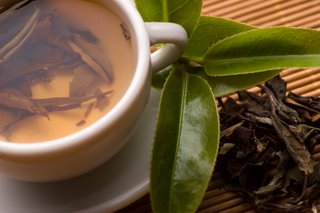 enjoy a tranquil cup of tea Tea, a beverage derived from the plant Camellia sinensis, represents a sense of ceremony, history, and tranquility to people around the world. The practice of making a good cup of tea and learning about tea’s history are gaining popularity in the United States as people recognize both the physical and mental benefits of incorporating the art of tea into their daily lives.
Historically reserved for society’s upper echelon and closely connected to religious practices, tea ceremonies have been adopted by many cultures and adapted to fit various lifestyles. Today tea is the world’s most popular beverage next to water. And although schools of thought differ on the art of tea, most agree that, at the root, a good cup of tea begins with the leaf, a deep breath, and a few moments of quiet.
“The entire event of brewing and drinking [tea] can have a beneficial effect on your health and mental well-being,” says Jane Pettigrew, author of several books on the art of tea, including The Tea Companion: A Connoisseur’s Guide (Macmillan, 1997). “Tea calms and focuses you.”
The quiet elegance of the tea ceremony—both the ritualistic and formal Japanese tea ceremony and the more social Chinese version—speaks for itself. The simplicity of the ceremony, whether performed in a traditional teahouse or at home, imparts a unique sense of serenity while it opens a door to another time and culture. A growing number of people who appreciate the history and grace that tea brings to their lives have created tea rituals of their own. “Everyone develops his or her own tradition,” says Stephanie Klausner, owner of Red Crane Teas in Denver. “Ceremony is what you make it.”
 the art of tea In general, tea ceremonies provide an opportunity for the body and mind to focus on one task and release other elements of the day. “It’s a mindful process that brings us back to ourselves,” says tea instructor Donna Roberts Fellman, manager of the TeaCup in Seattle. “It’s a way to create a sacred space in our lives, to take time to stop and be mindful of the process of making a cup of tea.”
Brewing a cup of tea
There are three basic tea categories: black, green, and oolong. They’re all made from the same plant but processed differently. Black tea has been fermented (oxidized) and has a dark color and hearty flavor. Green tea skips the oxidizing and is instead steamed and parched; the flavor is more delicate, and it is light green/golden in color. Oolong, popular in China, is semi-fermented and is a cross between black and green in color and taste. Herbal teas contain no “true” tea leaves but are created from flowers, berries, peels, seeds, roots, and leaves of many different plants.
The thousands of teas available range in price from $4 to $3,000 per pound. Yet even a tea that costs $100 per pound is only fifty cents per cup, making it one of life’s more affordable luxuries. “Nobody ever thinks they like tea until they have a good cup,” says Klausner.
Steeping a pot of tea is a contemplative process that begins with the selection of tea leaves, extends to the preparation of water, and culminates in the experience of holding a warm cup, inhaling the tea aroma, and savoring the tea’s flavor. True tea drinkers discuss the process of making tea with a sense of awe; it is an art form that has been passed from one generation to the next and used as a venue for preserving family traditions. Tea aficionados pay close attention to this art of preparation, which results in a superior cup of tea and provides the mind with a respite from the day’s emotional clutter.
Although a good cup of tea requires a mere ten to fifteen minutes to make, creating that time for pause and reflection represents more than an investment in tea. “It’s a comforting indulgence, a delicacy that’s good for your head and your body,” Klausner says. “It’s what I do for myself.”
adapted from Natural Home Magazine, September/October 2002 by Heather Grimshaw
“The Zen Alarm Clock & Chime Timer‘, uses soothing acoustic chimes that signal it’s time – gently and gradually.
Rather than an artificial recorded sound played through a speaker, the Zen Clock features an alloy chime bar similar to a wind chime. When the clock’s alarm is triggered, its chime produces a long-resonating, beautiful acoustic tone reminiscent of a temple gong.
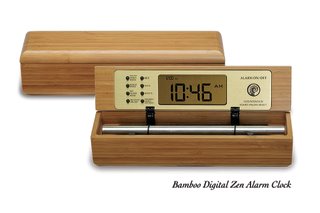 Bamboo Digital Chime Clock, a Tea Timer Now & Zen – The Zen Timer and Alarm Clock Store
1638 Pearl Street
Boulder, CO 80302
(800) 779-6383
Posted in Tea Ceremony, Zen Timers
 tips for staying healthy this holiday season As the chill of winter arrives, so does the prospect of congestion and coughing, sore throats and sniffles, and other less-than-desirable symptoms.
But you might have noticed that colds, flus, and other seasonal blights seem to hit some people again and again, while others coast through to spring unscathed. Is this punishment random, like a tornado, or is there a method to the cold-and-flu madness?
There is indeed a method. While we can all help prevent viral and bacterial infections by washing hands regularly and avoiding germ-laden surfaces, it’s not just the bugs we encounter that determine how healthy we are. Our well-being also depends on how prepared our bodies are to fight them.
An entire field of research called psychoneuroimmunology has bloomed in recent years. It aims to uncover the links between the brain, behavior, and the immune system. One of its primary targets is the universal phenomenon known as stress.
We’ve all experienced the nasty cold that comes after a deadline, and scientific evidence has borne out this pattern, with clinical studies showing that psychological stress can weaken defenses and slow recovery from illnesses small and large. A recent study from the University of California, Los Angeles, in fact, found that the effects of stress play out at the cellular level: Hormones cued by emotional stress make immune cells age faster.
What is stress? “It’s our body’s response to something that taxes or exceeds our resources, whether from external pressures or our own internal worries,” says Frances Cohen, a psychologist at the University of California, San Francisco. What feels stressful depends on a person’s reaction to a given circumstance. “For some people, getting divorced is a positive step,” she says. “But for others, it’s devastating.” When we perceive something as harmful, our brain triggers hormones such as cortisol, which can affect the immune system. “You can trace it from the brain through the body,” Cohen says.
After stress hormones pour into the bloodstream, “the body tries to correct itself, to bring itself back into homeostasis,” she adds. So if the stress is brief, the hormones dissipate, and the body returns to normal. In one study, her group found that people who lost their jobs had lower levels of an important class of immune cell. However, she says, “we saw a recovery of immune levels, a bouncing back, in people who got a new job.”
 reduce stress Stress that lasts over a long period of time proves far more damaging to our bodies than short-term stress. A study published earlier this year, for instance, found that consistently high levels of perceived stress could reduce women’s ability to fight an infection from human papilloma virus (HPV), which can cause cervical cancer; no such effect occurred with one-time stressful events such as job loss.
And in a preliminary study published in August, researchers studied people caring for family members with chronic illnesses (a long-term stressor); compared with a control group, the caregivers’ white blood cells were less responsive to cortisol and more responsive to a pro-inflammatory compound — leaving their bodies in a state of chronic inflammation.
Exercise and Sleep
Immunity isn’t all in your head, of course; day-to-day physical habits matter a great deal. Exercise, sleep, and nutrition in particular have strong links to immunity — and, not coincidentally, to our mental well-being.
Start with fitness: Those who exercise regularly, says Monika Fleshner, Ph.D., a professor of integrative physiology at the University of Colorado at Boulder, acquire a resiliency that makes them less susceptible to health problems. “This is especially important when we’re stressed and as we age,” says Fleshner.
Interestingly, more exercise isn’t necessarily better. “While too little exercise is bad for the immune system, too much is just as bad,” she notes. Athletes who exercise strenuously may have higher rates of respiratory infections. Just the right amount of movement helps maintain a healthy weight, which in turn plays a role in how well we battle colds and flus: People who are obese have diminished immune responses and more severe infections.
The fact that many Americans don’t get enough sleep and rest spells bad news for our immune systems, too, says Motivala, increasing the risk of conditions ranging from frequent colds to diabetes. “A normal sleep cycle is vitally important for immune function,” he explains, since immune cells circulate throughout the body according to cycles of sleep and wakefulness. Their levels in the blood peak around midnight, then gradually return to lymph nodes as we sleep. A lack of sleep interrupts this process, lowering levels of “natural killer” cells, important first-line defenders against infections.
 prioritize shut-eye
Prioritize Shut-Eye
Evidence shows that sleep has wide-ranging effects on immunity. Most of us need about eight hours a night, but quality matters just as much. “Keep track of how you feel in the morning,” says Sarosh Motivala. A little grogginess is fine, but you shouldn’t be dragging. “If you’re waking up tired, it doesn’t matter if you had eight hours or five hours, something is not right,” he says. Sleep problems can arise from a number of sources, including stress, a poor diet, or a sedentary lifestyle, so talk to your doctor or alternative health therapist to identify the cause in each case. Be sure to treat yourself gently in the morning by waking progressively over a 10 minutes period of time with The Zen Alarm Clock with Chime.
One of the ultimate Zen like experiences is waking-up from a great slumber refreshed and energized. Your mind and body are harmoniously one, both alert and focused. Having a refreshed mind and body are two keys to a natural and Zen lifestyle. Waking up in the morning should not be a loud and abrupt awakening, but rather it should be a peaceful positive experience. The right natural alarm clock can transition your deep and tranquil sleep into a serene start to consciousness. Imagine a long-resonating Tibetan bell-like chime waking you up to a beautiful morning experience.
The right alarm clock can be the most beneficial investment for you. With our Now & Zen natural alarm clock you are awakened more gradually and thus more naturally. Now & Zen is focused on creating a naturalistic lifestyle, and our clocks are an example of our philosophy.
adapted from Body + Soul, November 2008
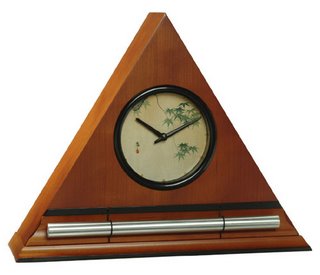 chime alarm clocks and natural sounding timers for a gentle wake up
Now & Zen – The Soothing Chime Alarm Clock Store
1638 Pearl Street
Boulder, CO 80302
(800) 779-6383
Posted in sleep, Sleep Habits, Well-being
Research published in the last two years shows that certain slow activities–like gentle yoga or gardening–can reduce your stress level and blood pressure and improve your body’s ability to regulate sugar. Past studies have shown that other habits like meditation can help reduce chronic pain and enhance mental clarity. The first step to finding “slowness”is to clear some room in your life–watch less TV or spend less time browsing at the mall. “Jettison the clutter that clogs up your schedule,” says Carl Honoré, author of In Praise of Slowness (HarperOne, 2004). “When you focus on the things that are important at work or at home you can enjoy those things more,”he says. You can also take a more relaxed approach to the things you already do and adopt new habits that require mindfulness. “It’s one thing to say you’re going to slow down, but a slow hobby helps you put those words into practice,” says Honoré. To get you started we’ve come up with seven ways to destress and reenergize.
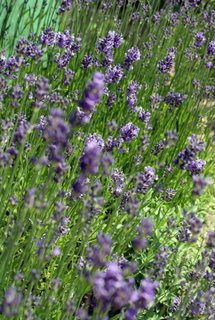 gardening is a great mindfulness practice that cultivates stillness of mind 1. Become a Gardener
Caring for flowering plants may help you relax and get grounded. In 2004, researchers at Japan’s Utsunomiya University found repotting plants lowered fatigue and promoted physiological relaxation in study participants, and that working with flowers seemed to have a stronger positive effect than working with nonflowering plants.
HEALTH BENEFITS Research shows that exposure to plants–and even just looking at them–can reduce blood pressure, increase concentration and productivity, and help you recover from illness, says Andy Kaufman, Ph.D., assistant professor of tropical plant and soil sciences at the University of Hawaii in Honolulu. He cites a classic 1984 study, published in Science, which showed that even the view of a green garden helped surgical patients recovering from gall bladder surgery. Among a group of 46 patients in a Pennsylvania hospital, the 23 who had rooms with windows facing greenery had shorter postoperative stays and needed fewer pain–relieving analgesics than the 23 whose windows faced a brick wall.
GETTING STARTED If you live in an apartment or don’t have much room to garden, invest in the EarthBox (earthbox.com), a self–watering container garden that comes with potting soil and fertilizer. “Even if you have a brown thumb, you can grow things [in it],”says David Ellis, American Horticulture Society spokesperson. You could also join a community garden; visit ahs.org, the American Horticulture Society’s website, for more info.
 yoga helps to slow us down 2. Practice Slow Yoga
Slow yoga emphasizes one drawn–out breath for each movement you make. Like tai chi, it uses many repetitive flowing moves. “When you practice slow yoga, you create more awareness between mind and body,”says Beth Shaw, founder of Yoga Fit Training Systems in Los Angeles. This creates a deep sense of stillness and helps develop patience and lower stress, she adds.
HEALTH BENEFITS Last year, researchers in Sweden and India showed that practicing yoga can reverse the negative effects of high blood pressure, obesity, and high blood sugar. The studies, published in the journal Diabetes Research and Clinical Practice, showed reduced waist circumference, blood pressure, blood sugar, and triglycerides (the chemical form of fat cells) and higher HDL (so–called good cholesterol) levels in a control group that practiced yoga versus a placebo group.
GETTING STARTED To find a Slow Yoga class near you visit yogafit.com or inquire at your local yoga studio. You might also consider restorative or yin yoga, two other gentle forms of the practice.
 Take a nap 3. Take a Nap
You snooze, you win, according to a Harvard study published last year in The Archives of Internal Medicine. Researchers revealed that people who regularly napped at least three times a week for an average of 30 minutes had a 37 percent lower risk of heart attack than those who didn’t nap. “It shows that napping is an important preventive strategy just like regular exercise, eating right, and not smoking,”says Sara C. Mednick, Ph.D., author of Take a Nap! Change Your Life (Workman, 2006).
HEALTH BENEFITS A daily nap also boosts serotonin, says Mednick, which may lead to improved memory and performance. Napping can even contribute to weight loss, according to a study in the American Journal of Physiology, Endocrinology, and Metabolism in 2007. That study looked at hormone levels in 41 men and women who were part of a seven–day sleep–deprivation experiment. Those allowed to nap for two hours following a night without any sleep showed a significant drop in cortisol, a hormone related to high levels of stress, and a complement of growth hormone, which helps regulate insulin and fat storage. Researchers concluded that a midafternoon nap improves alertness and performance and reverses the negative metabolic effects of sleep loss.
GETTING STARTED The best time to nap is between 1 p.m. and 3 p.m., but a 15– to 20–minute power nap at any time can help. Set your Zen Alarm Clock for 20 minutes. Close the office door and take a snooze, or find a quiet place where you feel safe. Nap on weekends, Mednick says. “Just don’t use the weekend to catch up on sleep lost in the week.”Check with your doctor about napping if you’re being treated for insomnia.
4. Start a Slow Hobby
 learning to paint Hobbies that require mindful, solitary activity–such as knitting, painting, sculpting, crocheting, or quilting–can act as a brake on your hectic pace.
HEALTH BENEFITS “Slow hobbies help you cultivate the lost art of concentration and being in the moment. They have a meditative quality to them,”says author Carl Honorè. “And that calming effect goes beyond the act itself. Maintaining that inner stillness enables you to negotiate the fast–moving waters of the rest of your day.”
GETTING STARTED Sixty–four percent of people who knit or crochet say they use these crafts to help them reduce stress and relax, according to the Craft Yarn Council of America. Visit craftyarncouncil.com for information. To learn about drawing, visit drawspace.com. Check with a local college or community center for other craft classes.
5. Eat Slowly
Eating too fast creates stress in the body, says nutritionist Marc David, author of The Slow Down Diet (Healing Arts Press, 2005). That causes a spike in cortisol and insulin, which in turn diminishes your ability to burn calories and makes you more likely to gain weight. Eating quickly also leads to overeating. “The brain demands more food if it doesn’t have time to register its needs for taste, aroma, and satisfaction,”says David.
HEALTH BENEFITS Taking time to eat creates a relaxation response, which means you’ll have fewer digestive complaints and your body will be able to take in the nutrients it needs. Plus “we make better food choices, and we know when to stop,”he adds.
GETTING STARTED To ease the pace, double the time you spend on your meals; for example, if you usually eat breakfast in five minutes, stretch it out to ten. “Focus on your food: Taste it, enjoy it, notice it, savor it,”says David. “Find relaxed time between bites by slowing down your internal conversation. Let go of any sense of urgency, and allow the moment to be sensual.”The cooking process can help you slow down too, says David. “Instead of microwaving something, make a soup from scratch.”
6. Do One Thing at a Time
A lot of us believe we get more done by multitasking. But research at the University of Michigan published in the Journal of Experimental Psychology in 2001, shows the opposite is true. “If you concentrate on one task at a time, you get more done faster and make fewer mistakes,” says David E. Meyer, director of the Brain, Cognition, and Action Laboratory at the University of Michigan.
HEALTH BENEFITS Taking on chores one at a time reduces chronic stress and protects your short–term memory, which comes under fire if the brain is overtaxed.
GETTING STARTED To curb outside distractions and focus better, set aside time when you can concentrate on one activity from start to finish. For example, check e–mail once an hour and turn off your instant messaging; let your phone messages go to voice mail and only check them occasionally throughout the day.
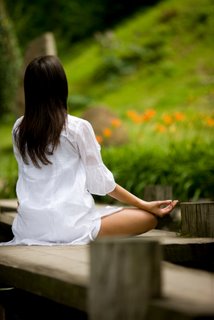 practice meditation in order to slow down 7. Meditate
“Meditation teaches us to focus,”says Steven Hartman, director of professional training at the Kripalu Health and Yoga Center (kripalu.org) in Stockbridge, Mass. “All day your mind is chattering. When you meditate, you can hear your own inner wisdom.”
HEALTH BENEFITS Studies have shown that practicing meditation also improves blood pressure, fortifies the immune system, and promotes a sense of well–being. “A daily meditation practice can bring body, breath, mind, and spirit into balance,”says Hartman.
GETTING STARTED Check out a program like Transcendental Meditation. (See tm.org.) Or begin at home: “Put an egg timer on and stay with your breath for just two and a half minutes,”says Hartman. “Keep your spine tall and straight and allow the breath to be natural.”If you’re seated on the floor, a cushion can raise your pelvis and bring your spine into a natural position. As you get comfortable with the practice, you can increase your time to 15 or 30 minutes a day.
adapted from Natural Health Magazine, by Chrystle Fiedler
One of the ultimate Zen like experiences is waking-up from a great slumber refreshed and energized. Your mind and body are harmoniously one, both alert and focused. Having a refreshed mind and body are two keys to a natural and Zen lifestyle. Waking up in the morning should not be a loud and abrupt awakening, but rather it should be a peaceful positive experience. The right natural alarm clock can transition your deep and tranquil sleep into a serene start to consciousness. Imagine a long-resonating Tibetan bell-like chime waking you up to a beautiful morning experience.
The right alarm clock can be the most beneficial investment for you. With our Now & Zen natural alarm clock you are awakened more gradually and thus more naturally. Now & Zen is focused on creating a naturalistic lifestyle, and our clocks are an example of our philosophy.
 Zen Meditation Timers with Soothing Chime Now & Zen – Soothing Chime Alarm Clock & Timer Store
1638 Pearl Street
Boulder, CO 80302
(800) 779-6383
Posted in Chime Alarm Clocks, intention, Meditation Timers, Meditation Tools, mindfulness practice, Natural Awakening, Now & Zen Alarm Clocks, sleep, Sleep Habits, wake up alarm clock, Well-being, yoga, Yoga Timer, Yoga Timers by Now & Zen, Zen Alarm Clock, Zen Timers
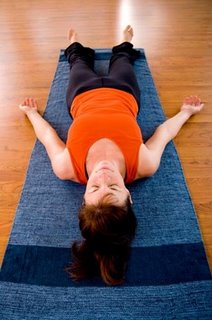 Yoga Pose 1. Lie down in the corpse pose and make yourself comfortable. Try a pillow under the head, and don’t forget a light blanket to keep drafts from drawing your attention outward.
2. Give yourself a few moments to settle, and allow your body to soften into the support of the ground. Watch the breath until it and your heart rate are steady.
3. Bring your awareness to each point listed below and allow the surrounding muscle tissues to relax.
Crown of the head
Forehead, temples
Eyebrows, eyelids, and eyes
Nose
(Focus on the breath flowing in and out of the nostrils, 2–4 times.)
Cheeks, jaw
Mouth, chin
Hollow of the throat
Sides and back of the neck
Shoulders
Upper arms, lower arms
Hands, fingers
Fingertips
(Inhale as if the breath is flowing down to the fingertips and exhale back up through the nostrils, 2–4 times)
Fingers, hands, arms
Shoulders
Chest and rib cage around the back to the spine
Heart center
(Inhale as if the breath is flowing down to the heart center and exhale back up through the nostrils, 2–4 times)
Abdomen
Sides, lower back
Hips, buttocks
Upper legs, lower legs
Feet
Toes
(Inhale as if the breath is flowing down to the toes and exhale back up through the nostrils, 2–4 times)
4. Reverse the sequence, bringing awareness up the body from the toes to the head without pausing for breath awareness at the toes, heart center, fingertips, or nose.
5. Take 10 breaths while keeping awareness spread throughout the body.
6. Make a gentle transition to your next activity.
Use our unique “Zen Clock” which functions as a Yoga & Meditation Timer. It features a long-resonating acoustic chime that brings your meditation or yoga session to a gradual close, preserving the environment of stillness while also acting as an effective time signal. Our Yoga Timer & Clock can be programmed to chime at the end of the meditation or yoga session or periodically throughout the session as a kind of sonic yantra. The beauty and functionality of the Zen Clock/Timer makes it a meditation tool that can actually help you “make time” for meditation in your life. Bring yourself back to balance.
adapted from Yoga International, Jan/Feb 2006 by Bran Cassidy
 Mediation Timers Now & Zen – The Zen Alarm Clock Store
1638 Pearl Street
Boulder, CO 80302
(800) 779-6383
Posted in intention, Meditation Timers, Meditation Tools, mindfulness practice, Zen Timers
 winter hibernation In the depths of winter, do you find yourself wanting to sleep more, eat more and curl up by the fire? We often behave as if seasonal changes are irrelevant to a modern lifestyle. After all, in many ways, civilization is all about overcoming nature. But our bodies are evolutionarily old and remember how weather once dictated behavior. In winter, we hunkered around a fire, repairing tools and telling tales that wove our culture. We packed our bodies close and slept long.
Now we act as if it’s always summer, demanding consistently high productivity at work and at home. But our bodies require cycles of activity and rest—daily, annually. When days are long, our metabolisms and energy levels amp up. In winter, we produce hormones that make us sleepy, giving us time to restore body, mind and soul.
And there’s nothing wrong with that cycle—except that we work against it, forcing ourselves to operate at summer levels even in winter. No wonder so many people feel depressed at this time of year!
How SAD is that?
You’ve probably heard of Seasonal Affective Disorder, or SAD. You might even suffer from it—as many as half a million U.S. citizens do, according to the American Academy of Family Physicians. The fact that most clinicians address the issue via technology (daily exposure to high-intensity electric light) and/or medication provides an interesting perspective on our time. But some have noted that SAD’s symptoms have more in common with hibernation than with clinical depression.
Could SAD be a result of modern living’s demand to move at top speed all day, every day—and mostly indoors, disconnected from the sun’s cycles? Could we give in to a bit of hibernation?
 Time for Winter's Nap
Oh, to hibernate!
Hibernation is a survival strategy some animals use to get through foodless winters. Though humans don’t hibernate, some cultures have come close.
In 1900, the British Medical Association published a description of winters among Russian peasants. For centuries, they survived scant winter food by engaging in lotska—sleeping the whole season away. “At the first fall of snow the whole family gathers round the stove, lies down, ceases to wrestle with the problems of human existence and quietly goes to sleep.”
The peasants woke daily to eat some bread and drink some water and then dropped off again, taking turns keeping the fire going. After six months, “the family wakes up, shakes itself, goes out to see if the grass is growing, and by-and-by sets to work at summer tasks,” the article states.
In a 2007 New York Times editorial, historian Graham Robb similarly described rural 19th-century France:
Economists and bureaucrats who ventured out into the countryside after the Revolution were horrified to find that the work force disappeared between fall and spring…Villages and even small towns were silent, with barely a column of smoke to reveal a human presence. As soon as the weather turned cold, people all over France shut themselves away and practiced the forgotten art of doing nothing at all for months on end.
 slowing down
Dreaming of a better world
What if we indulged our inclination to slow down in winter? We’d sleep more and demand less from ourselves. We’d be more inward and reflective. I once met an artist who had mastered this. Perusing her work, I asked how she stayed creative as a painter, writer, weaver and sculptor. Her answer:
She changes media each season. In summer she’s out on her deck chiseling a sculpture. In fall, she is reflective and poetic. In winter, she works with warm fiber at her loom. And as spring beckons her outdoors, she sets up her easel in the meadow. Should our lives be any less a work of seasonal art?
One of the ultimate Zen like experiences is waking-up from a great slumber refreshed and energized. Your mind and body are harmoniously one, both alert and focused. Having a refreshed mind and body are two keys to a natural and Zen lifestyle. Waking up in the morning should not be a loud and abrupt awakening, but rather it should be a peaceful positive experience. The right natural alarm clock can transition your deep and tranquil sleep into a serene start to consciousness. Imagine a long-resonating Tibetan bell-like chime waking you up to a beautiful morning experience.
The right alarm clock can be the most beneficial investment for you. With our Now & Zen natural alarm clock you are awakened more gradually and thus more naturally. Now & Zen is focused on creating a naturalistic lifestyle, and our clocks are an example of our philosophy.
Adapted from Natural Home Magazine, January/February 2009 by Carol Veniola
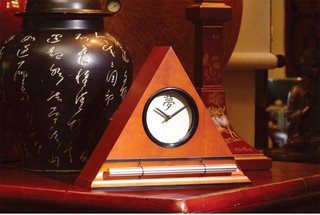 Zen Alarm Clock Now & Zen – Natural Chime Alarm Clock Store
1638 Pearl Street
Boulder, CO 80302
(800) 779-6383
Posted in Japanese Inspired Zen Clocks, Natural Awakening, Now & Zen Alarm Clocks, sleep, Sleep Habits, wake up alarm clock, Well-being
“Mindfulness” is the spiritual practice of being aware of your present moment.
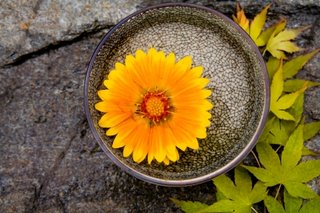 Take a moment to be still
World famous Zen monk Thich Nhat Hanh has developed the use of the bowl/gong in a practice he calls the “mindfulness bell.” When you hear the sound of the mindfulness bell, you are invited to take a moment to breathe in and out and center yourself in the present. During this practice, the resonating sound of the bowl/gong periodically connects you to the peace and tranquility that resides inside you right now. This delightful practice reduces stress and improves your overall health.
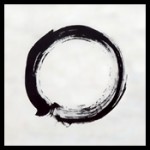 Zen Enso
Zen Timepiece, Zen Alarm Clock and Digital Zen Alarm Clocks can serve as a mindfulness bell in two ways: it can be set to strike on the hour (providing an hourly moment of stillness), or it can be set to strike at a programmed interval, such as every twenty minutes, or even every three hours.
 Mindfulness Further Reading:
- Thich Nhat Hanh Peace is Every Step: The Path of Mindfulness in Everyday Life. Bantam Books 1992
- Tolle, Eckart The Power of Now. New World Library 1998
- Kabat-Zinn, Jon Wherever You Go There You Are: Mindfulness Meditation in Everyday Life. Hyperion Press 1995
- Fontana, David The Meditator’s Handbook: A comprehensive guide to Eastern and Western meditation techniques. Element, Inc. 1992.
- Brooke, Avery Learning and Teaching Christian Meditation. Cowley Publications 1990.
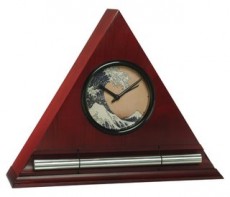 Hokusai Wave
Hokusai Wave
The Zen Alarm Clock is a consciousness-raising tool. No material object can actually raise your consciousness, but you can use information and devices such as this clock to stimulate your growth. The Zen Alarm Clock can effect your awareness in a variety of positive ways, all of which require your participation.
Use our unique “Zen Clock” which functions as a Yoga & Meditation Timer. It features a long-resonating acoustic chime that brings your meditation or yoga session to a gradual close, preserving the environment of stillness while also acting as an effective time signal. Our Yoga Timer & Clock can be programmed to chime at the end of the meditation or yoga session or periodically throughout the session as a kind of sonic yantra. The beauty and functionality of the Zen Clock/Timer makes it a meditation tool that can actually help you “make time” for meditation in your life. Bring yourself back to balance.
 Gradual Chime Clock Store and Meditation Timer Shop
Now & Zen – Meditation Timer and Gentle Chime Alarm Clock Store
1638 Pearl Street
Boulder, CO 80302
(800) 779-6383
Posted in Japanese Inspired Zen Clocks, Meditation Tools, Now & Zen Alarm Clocks, Zen Timepiece by Now & Zen, Zen Timers
|
|
|
|